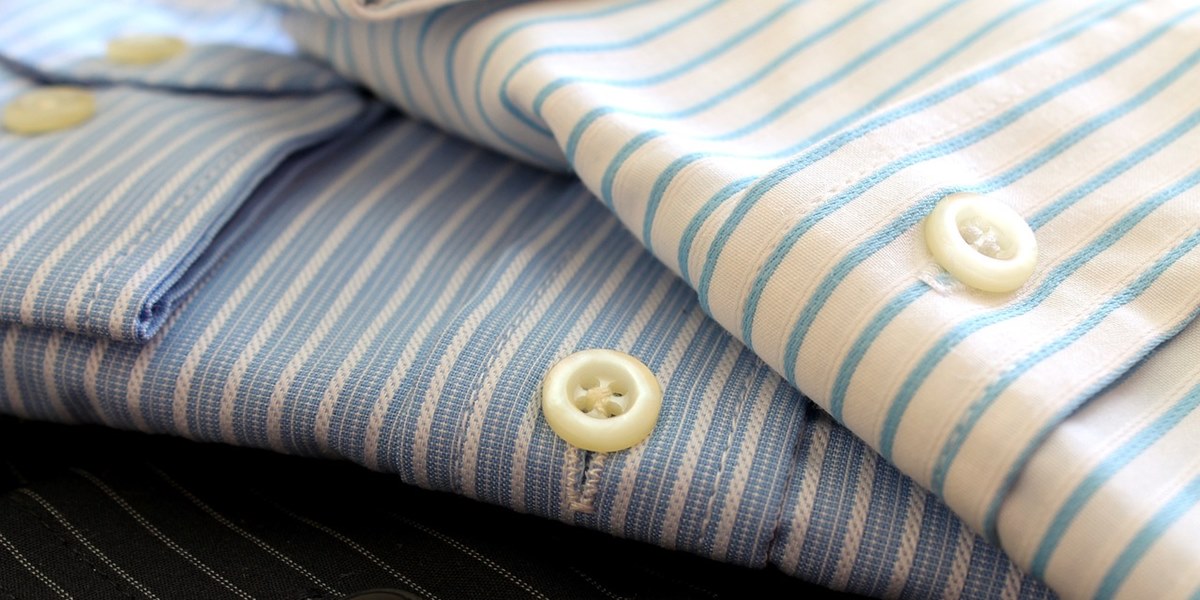Synopsis of the Film TERM LIFE (2016), A Touching Father and Son Action - Family Drama
So, for those of you who want to watch, here is the synopsis of the film TERM LIFE from 2016 complete with the cast list. Let's check it out, KLovers!

Kapanlagi.com - The shirt has become a universal clothing item that is widely used today. This article will thoroughly discuss Japanese vocabulary for shirt, its history, and the usage of these terms in the context of Japanese fashion.
We will explore the journey of the shirt from a symbol of Westernization during the Meiji era to becoming everyday clothing for modern Japanese society. Additionally, there are other clothing vocabulary in Japanese.
This will provide deep insights into how fashion shapes and is reflected in language. KLovers who are learning Japanese must read this article.
So, here are the Japanese expressions for shirt complete with other clothing vocabulary. Let’s check it out, KLovers!

Illustration (credit: pixabay.com)
In Japanese, KLovers who want to know about the Japanese word for shirt is also called "waishatsu" or "shatsu". The term waishatsu itself is a more commonly used term for formal shirts or shirts that are usually worn with a suit and tie, especially in the context of work or business attire in the Japanese workplace.
This word actually comes from the English "white shirt" which has been adapted into Japanese. Although it originally referred to white shirts, its usage has now expanded to include formal shirts of various colors. Meanwhile, "shatsu" is a more general term that can refer to various types of shirts.
This includes casual shirts, sports shirts, or even t-shirts. This word is also an adaptation from the English "shirt". In everyday usage, Japanese people often use both terms depending on the context. The word waishatsu is more often used in formal situations or when talking about work attire, while shatsu is used in a broader and more informal context.

Illustration (credit: pixabay.com)
In addition to knowing the Japanese word for shirt, KLovers can also learn that the history of shirts in Japan is an interesting reflection of the modernization and westernization of this country. The Western-style shirt was first introduced in Japan during the Meiji period (1868-1912).
This era was marked by Japan's massive efforts to modernize the country and adopt many aspects of Western culture, including clothing. At the beginning of the Meiji era, the Japanese government encouraged officials and the elite to wear Western clothing as part of the "bunmei kaika" policy.
White shirts, which are an integral part of Western suits, became symbols of modernity and progress. Initially, shirts were only worn by government officials and the elite. However, over time, their use began to spread to the general public.
After World War II, when Japan experienced rapid economic growth, shirts became increasingly popular as standard work attire for office workers or "salarymen". The term "waishatsu" (from the English "white shirt") began to be widely used during this period.
Although shirts have been widely adopted, Japan has retained some unique aspects in the way they wear and care for shirts. For example, many Japanese companies still require employees to wear white shirts as part of a strict dress code.
Today, shirts have been fully integrated into Japanese clothing culture. They are not only used in formal or business contexts, but have also been adapted into the famous creative and diverse Japanese street fashion style.
This development shows how an element of foreign culture can be adopted, adapted, and ultimately become an integral part of Japanese culture, reflecting the Japanese society's ability to blend external influences with their traditional values.

Illustration (credit: pixabay.com)
Now, for those of you who want to know clothing vocabulary other than the Japanese word for shirt, the following vocabulary can be learned. Here is the Japanese vocabulary about the Japanese word for shirt, complete with meanings:
1. Zubon - Pants
2. Seta - Sweater
3. Suka-to - Skirt
4. Jaketto - Jacket
5. Koto - Coat
6. Burausu - Blouse
7. Pantsu - Underwear
8. Bura - Bra
9. Ti-shatsu - T-shirt
10. Tanku-toppu - Tank top
11. Suetopantsu - Sweatpants
12. Jinzu - Jeans
13. Sukajan - Sukajan jacket (souvenir jacket)
14. Beruto - Belt
15. Nekutai - Tie
16. Boushi - Hat
17. Mafura - Scarf
18. Tebukuro - Gloves
19. Kutsushita - Socks
20. Suniika - Sneakers
21. Sandaru - Sandals
22. Pajama - Pajamas
23. Yukata - Yukata (summer kimono)
24. Kimono - Kimono
25. Haori - Haori (traditional jacket)
26. Hakama - Hakama (traditional trousers)
27. Obi - Obi (belt for kimono)
28. Geta - Geta (traditional wooden sandals)
29. Zori - Zōri (traditional sandals)
30. Jinbe - Jinbei (traditional sleepwear)
31. Happi - Happi (traditional festival jacket)
32. Kappogi - Apron
33. Epuron - Apron
34. Rainkouto - Raincoat
35. Mizugi - Swimsuit
36. Suki-wea - Ski wear
37. Undogi - Sportswear
38. Sukafu - Thin scarf
39. Chokki - Vest
40. Kadiggan - Cardigan
41. Poro-shatsu - Polo shirt
42. Fuku - Clothing (general)
43. Uwagi - Outerwear
44. Shitagi - Underwear
45. Surippa - House slippers
46. Kitsuke - How to wear a kimono
47. Megane - Glasses
48. Udedokei - Watch
49. Akusesari - Accessories
50. Handabaggu - Handbag
These are expressions for the Japanese shirt. Understanding Japanese clothing expressions opens a window to culture, showing how language and fashion have evolved together over time.
(kpl/dhm)
Cobain For You Page (FYP) Yang kamu suka ada di sini,
lihat isinya
So, for those of you who want to watch, here is the synopsis of the film TERM LIFE from 2016 complete with the cast list. Let's check it out, KLovers!
So, what are the explanations for the meaning of dreams about being imprisoned? To find out, just check out the following review.
Come on, let's take a look at the synopsis of the film LETHAL WEAPON which presents not just action, but also delves into the depth of character and friendship that grows amidst danger. Check it out, KLovers!
To understand the meaning of right head twitching according to Javanese primbon, just take a look at the following review.
To understand the meaning of twitching at the back of the head according to Javanese primbon, just take a look at the following review.
Curious about the explanation of the definition, characteristics, strengths and weaknesses, as well as the role of the MBTI Consultant ESFJ in life? To find out, just take a look at the following review.
There is a reason why Mariah Carey is suspected to be an MBTI ESFJ. It turns out that there are several traits or characteristics that are said to indicate Mariah Carey as an MBTI ESFJ. Curious about what those traits are? To find out, just check out the explanation
So, are you interested in watching the most popular classic Japanese dramas in Indonesia? If so, let's take a look at the list of recommendations and a brief review below.
In this article, Kapanlagi will explore how the INFP characteristics in MBTI are reflected in Lee Joon Gi's acting performance, role choices, and career decisions. Let's check it out right away.
Let's take a closer look at how the traits of Capricorn color the personality and career of this handsome actor. Is Kim Young Kwang really a true Capricorn? Let's check it out!
Curious about which Chinese dramas are good for learning Chinese history? To find out, just check out the list of recommendations and a brief review below.
For KLovers who want to understand the Japanese words related to zoos. Here are the expressions in Japanese related to zoos, complete with explanations and their history. Let's check it out, KLovers!